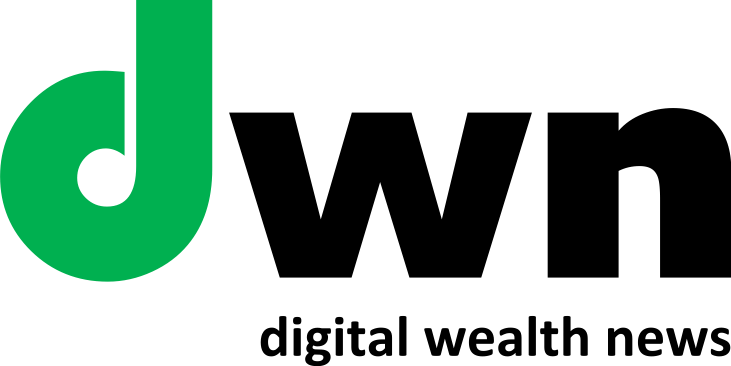By Greg Woolf, AI RegRisk Think Tank
When OpenAI released GPT-3 in late 2022, it sent shockwaves through Mountain View. Reports at the time revealed that Larry Page and Sergey Brin were pulled back into active decision-making as Google leadership issued an internal “Code Red.” For the first time in its history, Google wasn’t reacting to a competitive threat in search or mobile—it was reacting to a threat to its very identity.
Google had spent more than a decade positioning itself as an AI-first company, yet it watched a startup redefine the public’s understanding of artificial intelligence almost overnight. Inside the company, that moment crystallized a simple truth: Google’s long research cycles and careful release strategy were no longer advantages—they were liabilities.
Click Here to Learn More About the AI Readiness
Program for Financial & Wealthtech Firms
Bard and the Early Gemini Missteps
The early response was rocky. Bard, Google’s rushed answer to ChatGPT, was launched before it was ready. It offered uneven performance, and in one high-profile demo, it delivered an incorrect fact that wiped billions off Google’s market cap in a single afternoon.
The first generation of Gemini models didn’t fare much better. Overly aggressive safety filters distorted outputs and produced culturally inaccurate images—most famously, a Black George Washington—fueling criticism that Google was losing not only the race for quality but also the trust of users who expected precision from a company built on information retrieval.
For a time, it genuinely looked like Google was slipping into the pattern that felled BlackBerry, Nokia, and Sony: category leaders who became irrelevant in the span of a few years.
Google’s Structural Advantages
What the outside world couldn’t see was that Google still possessed something none of its competitors had: overwhelming structural advantage. Google spends tens of billions annually on R&D and generates nearly $80–90 billion in free cash flow every year—money that can be invested instantly, without fundraising, dilution, or dependence on partners.
OpenAI, despite raising historic amounts of capital, still operates at a fraction of Google’s scale. Google has the deepest bench of AI talent in the world, including many of the creators of the transformer architecture itself. It owns the compute stack through custom-designed TPUs. It owns the cloud infrastructure in GCP where its models run. And crucially, it owns the global distribution network—Search, YouTube, Chrome, Android, Maps, and Gmail—that touches billions of users every single day.
If AI is a general-purpose technology, Google controls the channels through which it can reach humanity.
The Data Moat
Data is perhaps the strongest advantage of all. Modern AI systems are data-bound, and no organization in history has amassed anything close to Google’s data footprint. Every day, billions of search queries provide real-time signals about human intent. YouTube holds the world’s largest archive of video and audio. Gmail contains decades of written communication patterns.
Chrome and Android provide continuously updated behavioral telemetry. These data sources aren’t just large—they are dense with meaning, context, and multimodal structure. In a world where models improve by consuming and interpreting the world’s information, Google owns the world’s information.
Reorganization, Leadership, and the Rise of Gemini 3
By 2024 and 2025, the internal reorganization started to pay off. Google merged research and engineering units, aligned DeepMind and Google Research under a single direction, and brought senior leadership—including Sergey Brin himself—back into hands-on involvement with AI development.
Out of this period of reinvention came Gemini 3, a model that didn’t simply match the competition but, on many measures, surpassed it. On core reasoning, scientific benchmarks, spatial reasoning, and coding tasks, Gemini 3 posted state-of-the-art results. Independent evaluators named it the new top frontier model.
Early adopters found it faster, more capable, more consistent, and better able to handle long-context reasoning than previous versions. In practice, Gemini 3 wasn’t just stronger on paper—it felt like a significant step forward.
The Competitive Fallout
The rise of Gemini 3 reshapes the competitive landscape for OpenAI and Anthropic in ways neither can ignore. OpenAI built its brand as the category’s pace-setter, but now faces a rival with deeper pockets, broader distribution, and a model that outperforms GPT-5.1 on many benchmarks.
While GPT-5.1 still retains an edge in creative writing, business ideation, and “human-like” tone, the perception that OpenAI is the inevitable leader has cracked. The challenge is sharper for Anthropic: Claude Sonnet 4.5 maintains superiority on certain coding and agentic tasks, but Gemini 3’s across-the-board gains make the competitive gap tighter than ever. And unlike Google, both companies must pay for compute, raise capital repeatedly, and operate within infrastructure they don’t control.
Gemini 3 doesn’t eliminate OpenAI or Anthropic—but it forces them into a race in which Google now has the structural advantages.
New AI Categories
More importantly, Google began opening entirely new categories of AI products. NotebookLM demonstrated AI-driven personal knowledge management at a level no other platform had executed. The Anti-gravity IDE unlocked new agentic development workflows.
Meanwhile, models like Nano-Banana (and the broader Nano family) pointed toward a future of continuous multimodal creativity, entertainment, and real-time reasoning. While competitors focused primarily on chatbots, Google pushed into new directions: agents that build software, assistants that analyze entire libraries of documents, and systems that operate across apps, interfaces, and devices with minimal friction.
Conclusion: Google Never Lost Its Edge—It Just Needed to Activate It
In the span of just a few years, Google flipped the narrative. The company that once looked slow, bureaucratic, and overly cautious is now positioned as perhaps the strongest contender in the AI race. The “Code Red” moment didn’t awaken a sleepy giant; it activated a company uniquely capable of responding and dominating at global scale.
The writing of this article was supported by AI models for content research. However, the ideas and structure were written by the author.
 Greg Woolf is an accomplished innovator and AI strategist with over 20 years of experience in founding and leading AI and data analytics companies. Recognized for his visionary leadership, he has been honored as AI Global IT-CEO of the Year, received the FIMA FinTech Innovation Award, and was a winner of an FDIC Tech Sprint. Currently, he leads the AI Reg-Risk™ Think Tank, advising financial institutions, FinTech companies, and government regulators on leveraging AI within the financial services industry. https://airegrisk.com
Greg Woolf is an accomplished innovator and AI strategist with over 20 years of experience in founding and leading AI and data analytics companies. Recognized for his visionary leadership, he has been honored as AI Global IT-CEO of the Year, received the FIMA FinTech Innovation Award, and was a winner of an FDIC Tech Sprint. Currently, he leads the AI Reg-Risk™ Think Tank, advising financial institutions, FinTech companies, and government regulators on leveraging AI within the financial services industry. https://airegrisk.com







